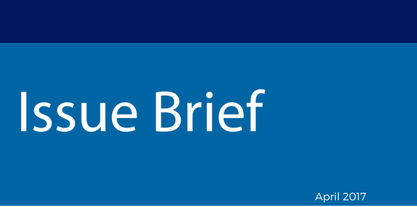
| ||||||||||
|
KEY POINTS:
 1850 M Street NW Suite 300 Washington, DC 20036 202-223-8196 | www.actuary.org Craig Hanna, Director of Public Policy © 2017 American Academy of Actuaries. All rights reserved. |
||||||||||
|
The primary drafter of this publication is Academy Senior Health Fellow Cori E. Uccello, MAAA, FSA, FCA, MPP. Members of the Health Practice Council include: Shari Westerfield, MAAA, FSA, vice president; Laurel Kastrup, MAAA, FSA, vice chairperson; Karen Bender, MAAA, ASA, FCA; April S. Choi, MAAA, FSA; Tim P. Deno, MAAA, FSA; Colleen Driscoll, MAAA, EA, FSA, FCA; Audrey Halvorson, MAAA, FSA; Barbara Klever, MAAA, FSA; Susan Lynn Mateja, MAAA, FSA; Catherine M. Murphy-Barron, MAAA, FSA; Michael E. Nordstrom, MAAA, ASA; Donna C. Novak, MAAA, ASA, FCA; Susan E. Pantely, MAAA, FSA; Adam J. Reese, MAAA, FIA, EA, FCA, FSA; Allen J. Schmitz, MAAA, FSA; John J. Schubert, MAAA, ASA, FCA; P.J. Eric Stallard, MAAA, ASA, FCA; Michael J. Thompson, MAAA, FSA; Cori E. Uccello, MAAA, FSA, FCA, MPP; Thomas F. Wildsmith, MAAA, FSA. |

This issue brief by the American Academy of Actuaries’ Health Practice Council focuses on ways in which the individual health insurance market can be strengthened and made more viable. Serious challenges to the stability and sustainability of the market exist for 2018, especially as some insurers have announced or are considering withdrawing from the market. The market stabilization rule recently finalized by the Centers for Medicare and Medicaid Services (CMS) includes provisions that are intended to improve the stability of the individual market.1 Nevertheless, many challenges and areas of uncertainty remain. Whether and how these challenges are addressed will affect enrollment, premiums, insurer participation, and consumer choice.
What is necessary for a sustainable individual health insurance market
Several conditions are necessary to achieve a stable and sustainable health insurance market.2 These include:
- Enrollment at sufficient levels for stable and predictable claims. In addition, when protections for individuals with pre-existing conditions are provided, it’s important to attract healthy individuals for a balanced risk pool.
- A stable regulatory environment that facilitates fair competition.
- Sufficient insurer participation and plan offerings to provide insurer competition and consumer choice.
- Low spending growth and high quality of care, because most premium dollars go toward paying medical claims.
The Affordable Care Act (ACA) has dramatically reduced uninsured rates, yet enrollment in the individual market is lower than initially expected and enrollees have been less healthy than expected. Competing plans generally face the same rules. However, the uncertain and changing legislative and regulatory environment—including legal challenges, allowing individuals to retain pre-ACA coverage, and constraints on risk corridor payments—contributed to adverse experience among many insurers. As a result of these and other factors, insurer participation and consumer plan choice decreased in 2016 and 2017. Insurers are currently making their decisions on whether to participate in the market in 2018 and if so, where to set their premiums. Continued uncertainty adds to the risk that insurers will discontinue their participation.
What is needed to improve individual health insurance market stability and sustainability
Continued funding of cost-sharing reduction (CSR) reimbursements. The ACA requires insurers to provide cost-sharing reductions to eligible low-income enrollees. Although the law stipulates the federal government to reimburse insurers for these reductions, a U.S. district court ruling in a challenge bought by the House of Representatives found that a congressional appropriation is required to make such reimbursements.3 The case is now on hold because both parties asked for a continuance to allow time for a resolution.4
For actuaries to assess premium requirements, they urgently need to know whether those reimbursements will be funded. Decisions to not pay the reimbursements or even uncertainty about the reimbursements could result in 2018 premiums increases averaging nearly 20 percent for silver plans, over and above premium increases due to medical inflation and other factors.5 The continued uncertainty or prospect of higher premium increases could cause more insurers to withdraw from the market, potentially leaving more areas of the country with one or even no participating insurers.
Funding of the CSR reimbursements through congressional appropriations or other means is needed as soon as possible to avoid these premium increases or potential further market withdrawals.
Enforcement of the individual responsibility penalty. The individual responsibility penalty (the individual mandate) was intended to encourage healthy individuals to enroll, but its financial penalty is usually low as a share of premiums, many individuals are exempt, and enforcement is weak. Nevertheless, the mandate, especially in conjunction with the premium- and cost-sharing subsidies, likely increases enrollment above what it would otherwise be. Strengthening the mandate, through higher financial penalties or stricter enforcement, could increase its effectiveness. Just the opposite is happening, however. If there is an effort to further reduce enforcement, as has been suggested, the result could be a deterioration of the risk pool and higher premiums.
One question is whether there are any alternatives to the individual mandate that could result in a more balanced risk pool. Continuous coverage requirements have been suggested as one such alternative. But if the associated penalty is too low, it won’t do enough to encourage healthy individuals to enroll sooner rather than later. If the penalty is too high, then the only people with prior gaps in coverage willing to pay the penalty are those who have high health care needs. Auto-enrollment, successful in increasing participation in retirement savings plans, has the potential to achieve high participation rates if logistical hurdles such as how to identify eligible enrollees could be overcome. The residual and transitional nature of the individual market could make those efforts especially difficult, however.
Increased external funding. If the individual mandate is a “stick” to encourage enrollment, then premium subsidies are a “carrot.” Weaker sticks could be offset by stronger carrots. One approach is to increase premium subsidies by extending premium tax credits to all enrollees; increasing premium tax credits for currently subsidy-eligible enrollees; or increasing them for specific subgroups, such as young adults.
External funding to offset insurer costs for high-cost enrollees, for instance through invisible high-risk pools, would be another way to lower premiums, increase enrollment, and improve the risk pool.6 For instance, during the first year of the ACA’s transitional reinsurance program, the $10 billion reinsurance fund was estimated to reduce premiums by about 10 to 14 percent.7 Lowering premiums in this way could also reduce federal spending for premium tax credits.
Avoiding legislative or regulatory actions that could increase uncertainty or threaten stability. It is important not only that actions to stabilize and improve the market be taken, but also that actions that would destabilize the market be avoided. Allowing the sale of insurance across state lines8 or expanding the ability of individuals to obtain coverage through association health plans (AHPs)9 could lead to market fragmentation and a destabilization of markets, especially if states were allowed to vary market rules and coverage requirements. Opening up non-ACA-compliant plans to new purchasers would also destabilize ACA-compliant markets.
Actions need to be taken to reduce legislative and regulatory uncertainty and to improve market stability. Continuing uncertainty could lead to additional insurers exiting the market, leaving consumers with fewer insurance choices, or none at all. Improving the market would entail policymakers funding CSR reimbursements, enforcing the individual mandate, directing external funding to offset premiums, and avoiding destabilizing actions.